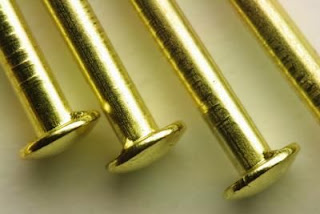0
Yellow VS Red Brass – Which Should You Use?
When you mix together varying amounts of copper and zinc,
you are left with a metal known as brass. Different rations of both copper and
zinc result in different types of metal, two of the more popular being yellow
(which is sometimes called gold, but they really are two different types) and
red (which is also known as rose). So, if you are in need of brass for an
upcoming project, which of these two should you be using?
Red
This brass is so named because it has a reddish hue that is
caused by the high concentration of copper it is comprised of. It is commonly
used in the construction and mechanical industry (especially in components like
valves, sprinklers and pumps) and is also the metal of choice for the production
of musical instruments.
Yellow
This brass is so named because it is yellow in colour and is
very shiny (hence why it is sometimes called gold). It is commonly used in
applications around the home (such as faucets, screws and bolts), but it also has
uses in the production of musical instruments and is commonly used for the
creation of costume jewellery (as it looks like gold).
There are many similarities between these two types of
brass, including the fact that they are both comprised of copper and zinc. They
are also both used in the production of musical instruments (as the type of
brass used in the tube or horn actually alters the sound that is produced). The
plumbing and electrical industries also use either red or yellow brass in their
work, as both types are flexible and extremely strong.
The main difference between yellow and red brass, however,
is the copper content (which results in the differences in colour).
Fortunately, this gives you the means of determining which type of brass you
are dealing with if you are ever unsure – take a file to sand at an
inconspicuous area of the object. An orange-y residue means that you are
dealing with red, whilst pale yellow shavings suggest yellow.
Both red and yellow brass can be recycled, making them both
quite an environmentally friendly material choice. Whilst the red type can be
recycled as is, however, the yellow type will need to be purified first to
remove any other metals that have been used in its composition. This is because
red brass consists of at least 85% copper, whilst the yellow type will only
have 60% copper or less in its makeup.





